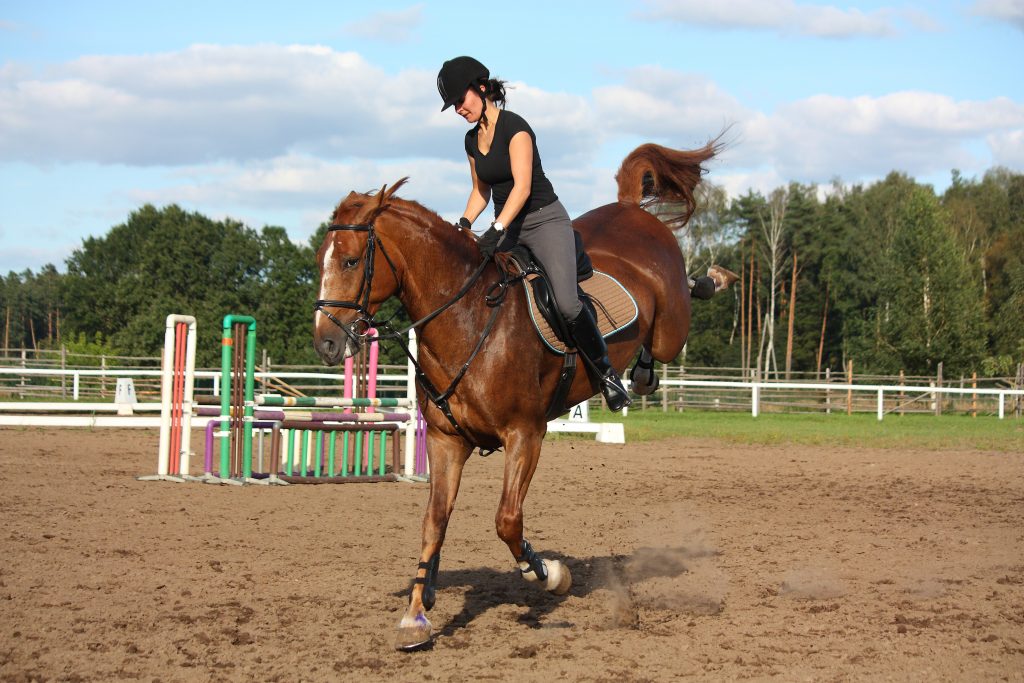Advice and Information
Castraion in Horses
By Dr Callum Macleod-Andrew, BSc BVSc MRCVS of Stride Equine Vets
Castration, also known as gelding, is a surgical procedure in which a male horse’s testes are removed. It is one of the most common surgical interventions performed in equine veterinary practice. Once castrated, a male horse is called a gelding.
Why castrate your horse?
Castration is performed most often for behaviour modification as, left entire, male horses (stallions) can become difficult or even dangerous to manage. In mixed herds of mares and geldings they may fight with other males for dominance, with the added risk of unwanted pregnancies. This aggression and sexual behaviour can be disruptive in competitions and will need extra consideration in mixed stable yards.
Geldings generally have more predictable and manageable temperaments, making them easier to handle and safer to work with. They are usually more reliable for performance and work, whether in racing, eventing, or general riding.
When to Castrate?
Although castration can be performed at any age, we recommend the procedure on colts of 6-18 months as older horses that have reached sexual maturity may retain some elements of stallion-like behaviour.
Younger colt foals typically recover more quickly from the operation and experience fewer post-operative complications. This is likely due to their smaller testes and associated blood vessels at a younger age, resulting in less bleeding during surgery, reduced post-operative swelling, and a lower risk of infection afterwards.
Castrations are typically performed in the spring and autumn to avoid the heat and flies of summer and the wet and mud of winter. When planning the procedure, please be aware that your horse will recover more quickly if he is given gentle exercise in the days after the operation.
Can it be done here?
In most cases, your Stride vet can perform this procedure at your horse’s home. A young and docile colt can be castrated with heavy sedation and local anaesthetic while it is standing in a yard or field. Older or more resistant horses may need a different approach.
Castrations are best carried out in a clean, flat, dry field or in an outdoor or indoor arena, provided the surface isn’t too dusty. We can perform castrations in stables, but more space is preferable.
Colts with undescended testes are referred to as ‘rigs.’ These undescended testes may be retained in the groin or abdomen, which makes the procedure more complex. For this reason, rigs are generally best castrated in an equine hospital under general anaesthetic (your vet will advise you).
How is it done?
Both testes are surgically removed through incisions in the scrotum. The internal connections of blood vessels and tubes leading from the testicle to the body must also be crushed and cut.
There are two techniques for completing the procedure, ‘open’ and ‘closed’. The ‘open’ method leaves the wound open for postoperative drainage. In the “closed” technique, the various layers are sutured after the testes are removed to prevent the intestines from herniating through the site. This method takes longer and is usually performed at a hospital.
The surgery is relatively brief, typically lasting around 15 minutes per teste, and the foal is allowed to recover naturally. We will help manage the recovery, to make sure the horse doesn’t try to stand before fully regaining its senses and balance.
What happens after the castration?
Proper aftercare is crucial to prevent complications such as infection, excessive swelling, or haemorrhage. The incision site should be kept clean and monitored for signs of infection (e.g., swelling, redness, discharge).
Controlled exercise is recommended starting 24-48 hours after surgery to reduce the risk of swelling and promote circulation in the area. Gentle hand-walking or turnout in a small paddock is often advised. Excessive or high-impact exercise should be avoided for the first week.


What are the possible complications?
Castration is generally a safe and routine procedure, but, like any surgery, it carries some risks, including death. Potential complications include:
Bleeding is a common concern after castration, especially if the blood vessels reopen following ligature. Minor bleeding is expected, but any significant or prolonged bleeding should be addressed by your vet.
Swelling of the scrotal area is typical, especially in the first few days after surgery. However, excessive swelling, warmth, or discharge may indicate infection and require treatment with antibiotics.
In rare cases, part of the intestines may herniate through the surgical site, particularly in young colts or horses with pre-existing inguinal hernias. This is a serious complication that requires immediate veterinary attention.
Conclusion
Castration is a routine and effective procedure that plays a crucial role in managing male horses. It reduces undesirable behaviours, makes horses easier and safer to handle, and prevents unwanted reproduction. With proper care and attention to post-operative recovery, most horses heal without complications and can lead long, healthy, and productive lives as geldings.

Call to ask any question
01420 551 365
Equine Services
Your Trusted Equine Partner
Expert veterinary care for horses in Surrey, Hampshire and the surrounding areas.

